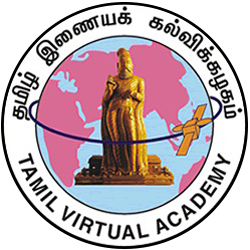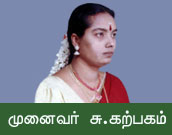Primary tabs
-
D06144 Lesson 4 Dance Drama
A play that narrates a story through dance and song is called dance drama. This lesson is a detailed study of dance dramas in Tamil. It defines dance drama and discusses its types. It also draws a list of the numerous allusions to dance dramas in ancient literature. Dance drama is called “koothu” in Tamil and the performers are called “koothar” and “virali”. “Kootharatruppadai” is one of the texts in “Pathupaattu”. “Koothanool” written by Saathanaar is the first authoritative text on koothu. Several works in ancient literature allude to the performance of koothu and koothars. The term is found in “Tholkappiam”, a very ancient grammar text. The twin epics “Silapathigaram” and “Manimekalai” glorify this art. Madhavi, one of the central characters in “Silapathigaram”, excels in various types of koothu. “Puranaanooru”, “Pathinenmelkanakku Noolgal” and “Pathinenkeezhkanakku Noolgal” also refer to this art. Koothu is classified into various types on the basis of subject and form. The stories narrated through koothu generally revolve around 4 subjects or themes: viz. epics, puranas, history and society. When divided on the basis of form, koothu falls into 7 types. They are kuravanji, pallu, nondi naadagam, isai naadagam, arayarsevai, yakshagaanam and therukoothu. Music in koothu is classified as songs called “isaipaadalgal” and musical notes called “isaiamaithigal”. Both classical and folk dance forms are integrated into koothu performances. The structure of a koothu falls into 5 sections called “aivagai santhigal”. These are exposition or mugam, rise in action or prathimugam, climax or karupam, fall in action or vilaivu and conclusion or denouement or thuithal. Other aspects of drama such as characters, dialogue, setting and plot are also found in koothu. Costumes and make-up are also of great importance in koothu.


